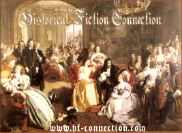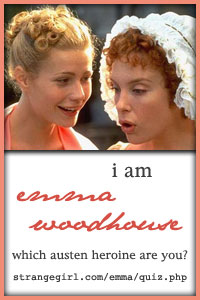5 roses
 After reading Rutherfurd's novel about Sarum (Salisbury) I couldn't wait to see what he did with the families in London. I was not disappointed. Starting at the banks of the Thames with the druids right before the Roman conquest of England and stopping on the banks of the Thames in 1997, Rutherfurd paints an absolutely amazing picture of London. He includes several different maps at the beginning which show London in different periods in its history and I found it fascinating to see how the city changed and expanded throughout the years. He also includes, thankfully, a very helpful family tree which really comes in handy when you're trying to keep up with all the families and their intertwining story lines throughout the novel. Of course there is going to be the usual embellishment that you're going to find in any fictional novel but it is mixed so well with history that nothing is going to see really out of place (or time).
After reading Rutherfurd's novel about Sarum (Salisbury) I couldn't wait to see what he did with the families in London. I was not disappointed. Starting at the banks of the Thames with the druids right before the Roman conquest of England and stopping on the banks of the Thames in 1997, Rutherfurd paints an absolutely amazing picture of London. He includes several different maps at the beginning which show London in different periods in its history and I found it fascinating to see how the city changed and expanded throughout the years. He also includes, thankfully, a very helpful family tree which really comes in handy when you're trying to keep up with all the families and their intertwining story lines throughout the novel. Of course there is going to be the usual embellishment that you're going to find in any fictional novel but it is mixed so well with history that nothing is going to see really out of place (or time).The novel is about several families that live in London - the Duckets and Doggets (branches of the same family), the Bulls, the Silversleeves (who seem to come across as the "villains" throughout the different generations), the Barnikels (descended from Vikings), the Carpenters, the Flemings, the Merediths (who originally came to England with the first Tudor king), and the Pennys. Thankfully all seven of these families do not show up in each chapter (which are divided pretty much according to a major event in each historical period [Roman, Anglo-Saxon, Norman Conquest, etc]) so you will only have to keep up with around three to four of the families per time period. It is really fascinating to follow these families and their relationships with each other. It really shows us how families in these distant days would pass on their feuds and friendships down through the generations. We see our fictional families deal with such momentous events such as the coming of Julius Caesar, the Norman Conquest and the building of the Tower of London, the Black Death, the Tudor dynasty and the rise of the playhouses, the fire of London, the Industrial Revolution, and World War II. As in Sarum, Rutherfurd does have his fictional characters rubbing elbows with historical figures and sometimes, of course unknowingly, having an effect on history itself. It was easy to sympathize with many of the characters and equally as easy to despise others; they are given such wonderful and unique personalities. I loved seeing how each character and family changed and evolved based on the events surrounding them. It was equally amazing to see how some things didn't change in the families over time. The city itself is described in great detail and I found it very easy to picture what it looked like in its different periods of development. There is marvelous writing through out the novel describing every day life in London which really makes it come alive and really helps a modern reader get a better idea of what life was like for people in these harsh times. There is even some wonderful humor (I laughed out loud when little Osric got his "revenge" on Ralph Silversleeves). The middle chapters seemed to move along at a much faster pace but that is to be expected considering the very eventful periods it covers (the Wars of the Roses, the Tudors, the Civil War, etc). It amazed me how Rutherfurd was able to tie all the families and events together throughout 2000 years of history (see if you catch how he ties together a Roman coin forger and an archaeologist in the book's last chapter).
Now that I am much more familiar with many of the periods and events covered here I will probably go back and re-read it. This is a long novel (prepare yourself for some flipping back and forth between your reading and the maps and family tree at the front) and some parts will drag a bit but I do not think you'll be disappointed. I thoroughly enjoyed this adventure through London's history and I would recommend it to anyone, especially those interested in London's very colorful history.























Glad you enjoyed it, I just picked this up at the bookstore! With the mixed reviews on Amazon I was a bit nervous.
ReplyDeleteAnd I have to say as far as your current read (Heyer) I love Heyer but did not like My Lord John at all. I'll be interested in hearing how you felt about it. But I like Heyer for her witty romances and mysteries and was hoping that style would shine through in her historicals so perhaps I was being too harsh.
I really enjoyed Rutherfurd's Sarum and this one was just as wonderful.
ReplyDeleteI'm not far into My Lord John yet but I really don't have an opinion thus far. The use of the French (?) names for John of Gaunt is a bit confusing at times and so far its a bit dry but I was expecting that. I read her historical about William the Conqueror and while I enjoyed it and it had great information in it, it was a bit dry to read.
I had such fun reading London. I picked up Rutherford's Princes of Ireland this last weekend at a book sale.
ReplyDelete